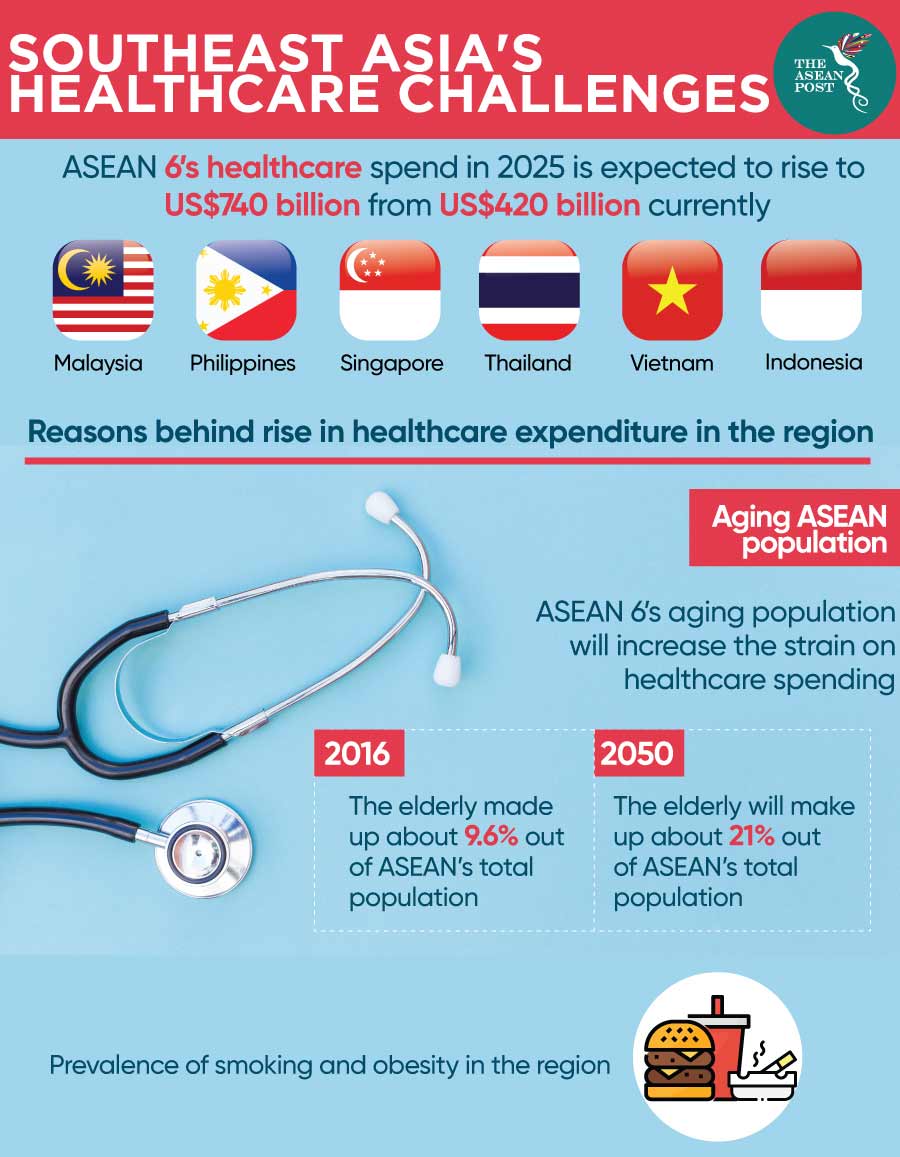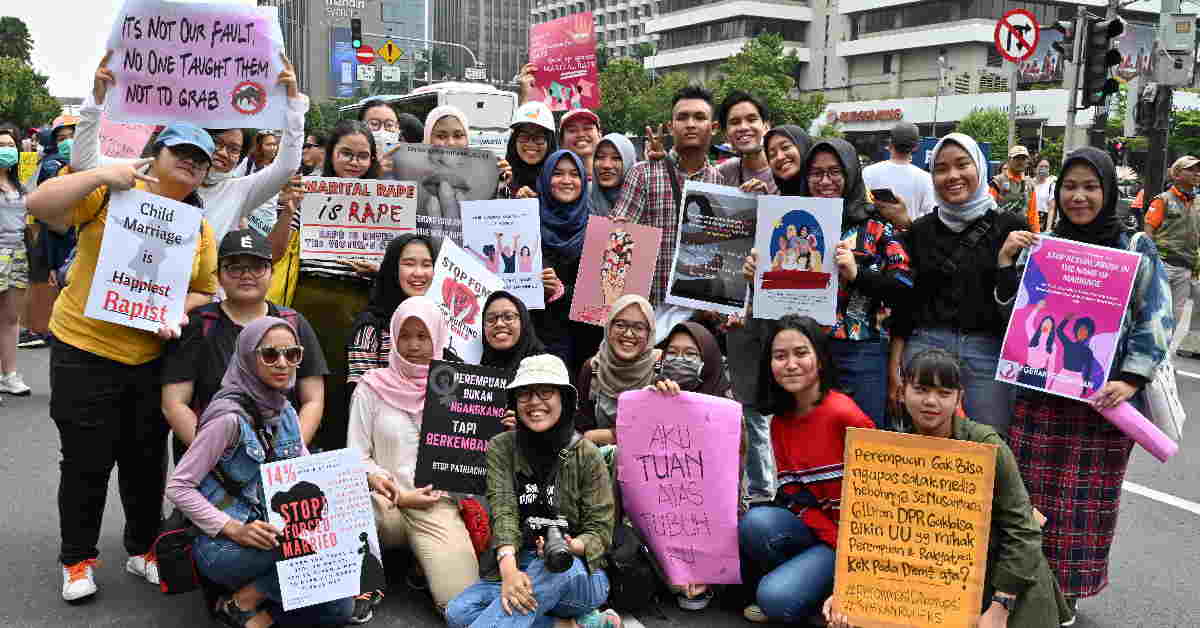“One Vision, One Identity, One Community.” That’s the motto of the Association for Southeast Asian Nations (ASEAN), a regional intergovernmental organisation made up of 10 countries: Brunei, Cambodia, Indonesia, Lao, Malaysia, Myanmar, Philippines, Singapore, Thailand and Vietnam.
The goal of regional cooperation is to facilitate common interests, unifying the region through mutual cooperation while simultaneously recognising each country’s cultural, social and economic identity. Yet recent trends, including increased geopolitical polarisation, trade conflicts and health crises, including the recent outbreak of COVID-19, threaten the interconnectedness of the region.
In response, here are four strategies from local leaders in government, business and civil society who have created innovative solutions to enhance the region’s cohesion. They are members of the Forum of Young Global Leaders, a World Economic Forum (WEF) community of leaders under the age of 40 who are working to drive positive change in the world.
Increase access to healthcare
For ASEAN to prosper, access to healthcare is key. In Singapore, David Sin, co-founder, group president and deputy chairman of healthcare platform, Fullerton Health, is transforming how primary care is provided across ASEAN and the wider Asia-Pacific as a whole. Seeking to make healthcare more affordable and accessible for all, David says it is this vision that unites his team, which works across 10 markets in nine countries, including four ASEAN member states (Indonesia, Malaysia, Philippines and Singapore).
“In a world that is increasingly insular and divisive, it is more important than ever for leaders to stand for and encourage inclusiveness, dialogue, and openness,” he said. “Fullerton Health integrates patients, payors and providers on our regional healthcare platform to facilitate seamless access and consistent quality of care across ASEAN.”

In caring for over 10 million patients in the region, David demonstrates the immense opportunity for ASEAN’s healthcare system. As healthcare costs for the average citizen continue to increase, it will become more arduous for the national expenditures of ASEAN members to take them on. This, coupled with a rapidly aging population will mean that the region will need to work together to invest in a shared future to fulfil its citizens’ healthcare needs. Through stronger cross-regional sharing of viable healthcare models, the private sector has an equally key role to play as the public sector in determining how the region maintains its spirit for integration.
Invest in sustainable agriculture
Agriculture in ASEAN has been a major industry for ASEAN and offers another opportunity for regional collaboration. In a region as diverse as Southeast Asia, each member state has different agriculture produce – including rice, tea, soybean and maize. What has profited ASEAN countries in the form of exports has also fed them during times of food insecurity.
Some member states, including Brunei, Indonesia and Philippines, have even set self-sufficiency targets on main staples such as rice. While these targets are a result of wanting to mitigate vulnerability, caused by policy fluctuations and at times, global supply and demand shifts, they have also entailed setting minimum production benchmarks such as 100 percent maize production in Indonesia and amplifying targets for certain crops like a 2.5 percent annual increase in rice yield for Vietnam.
The region has also developed guidelines to promote and improve investment in sustainable agriculture. The ASEAN Integrated Food Security Framework and the Strategic Plan for ASEAN Cooperation in Food, Agriculture and Forestry are proof of how the region has sought greater integration to respond to issues of food insecurity.
Ren Hua Ho, CEO of Thai Wah Holdings, a starch and consumer foods company based in Thailand, is a pioneer in the sustainable agriculture space. Having spent 10 years working across ASEAN, especially in Thailand as well as in China, Ren Hua has led multinational teams and interacted frequently with local governments as well as farmer stakeholder groups. With Thai Wah’s emphasis on sustainable starch production, he has guided the company to focus on delivering greener products from “farm to shelf.”
For him, becoming more sustainable has meant concentrating on farmer livelihoods, creating more development opportunities for the smallholder farmer and ensuring supply chains across the region respect human rights. Young leaders like Ren Hua are essential architects in guaranteeing that ASEAN’s precious resources continue to feed the region. To galvanise countries to innovate their domestic agricultural production strategies, such leaders will need to continually embed sustainability and a dedication to regional cooperation.
Support the rights of children in the digital space
Assuring the health and well-being of people across ASEAN will also mean guaranteeing the rights of children in the region, especially when it comes to the digital space.
Three decades after the adoption of the Convention on the Rights of the Child (CRC) in ASEAN, the regional association came together to draft 10 recommendations to improve child rights. One of these recommendations is focused on bridging the digital divide and ensuring children can access safe and informed content online. According to the 2020 Child Online Safety Index, which measures countries’ child online safety, ASEAN countries were ranked low in child online safety, and 60 percent of children had experienced at least one cyber-risk, defined as cyber-bullying, risky contacts, or disordered technology usage.
Yuhyun Park, Founder of the DQ Institute, an international think tank committed to digital intelligence education and based in Singapore, is committed to ensuring an ASEAN where a child’s online safety is a priority. “I would like support the ASEAN countries collectively to work together to create a safer internet for our next generations and resilient digital economy,” she said.
DQ works to evolve how digital intelligence education is taught and received. Through programmes like the #DQEveryChild initiative, Yuhyun is seeking to ensure one billion children globally are made more digitally aware and intelligent. In ASEAN, her work will mean that while we may not be able to contain emerging cyber risks, we can assure that children in ASEAN are being taught the skills they need to survive in an exponentially growing digital world, as well as quell the dangers posed by cyber-bullying and technology addiction. Moreover, in a time when the internet can bring together the region, it will ensure that such interconnectedness does not come at the cost of safety.
Improve financial integration
Successful regional integration for ASEAN will also mean a region that can accommodate free and agile movement of goods, services, investment and capital, also known as financial integration. The establishment of the ASEAN Economic Community (AEC) was prompted by this vision. The importance of financial integration cannot be understated in order for ASEAN member states to be veritable players in the global economy.
Serey Chea, Assistant Governor at the National Bank of Cambodia (NBC), is working to apply technology to improve integration in the financial services industry. Serey is a leading force on the Bakong Project, an initiative by the NBC to introduce electronic money for payment transactions between banks. She has initiated cross-border projects in ASEAN designed to improve how retail payments and remittances are exchanged. For example, she created a QR-code-based payment system between Thailand and Cambodia to assist tourists, which was launched in February.
By applying smarter digital innovation to facilitate payments and make them more convenient and secure, the Bakong Project, among other initiatives, demonstrates how through increased connectivity, ASEAN can become more economically prosperous. More facile cross-border transactions, including lending and borrowing activities, will also mean economically empowering the members of ASEAN and its strongest economic assets, its citizens.
David, Ren Hua, Yuhyun and Serey are reminders that when ASEAN comes together to celebrate its members’ unique strengths, cultures and historical legacies while working to promote values of integration and unity, it benefits the entire region.
Related articles:

